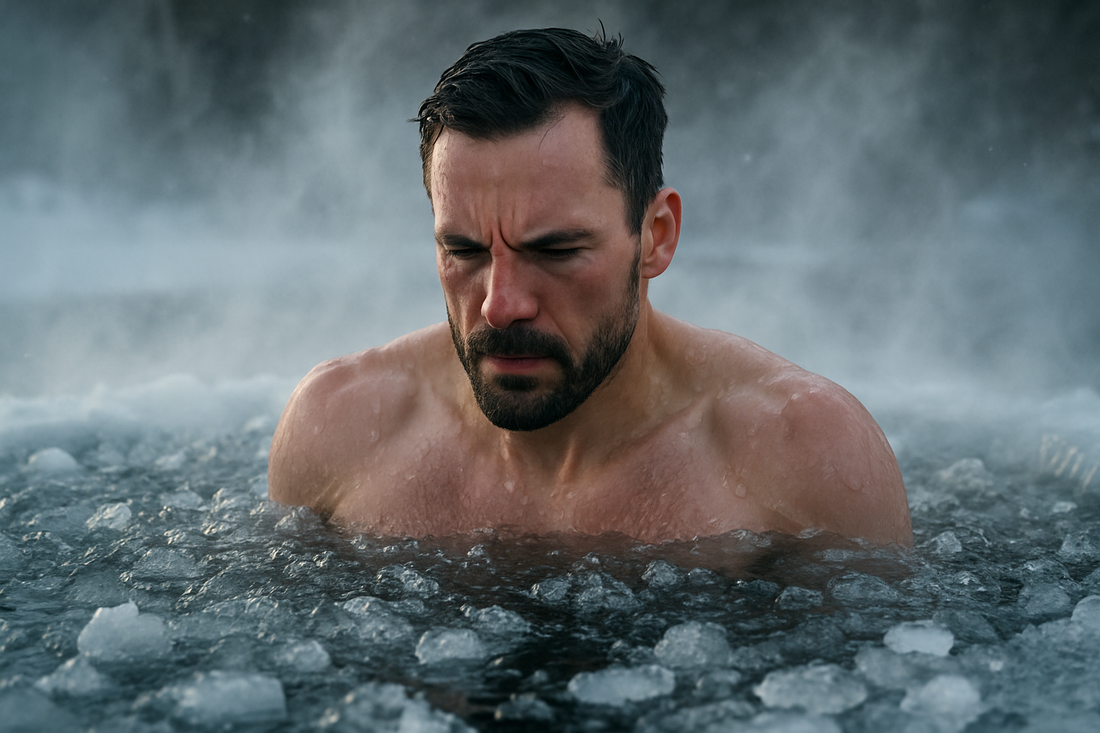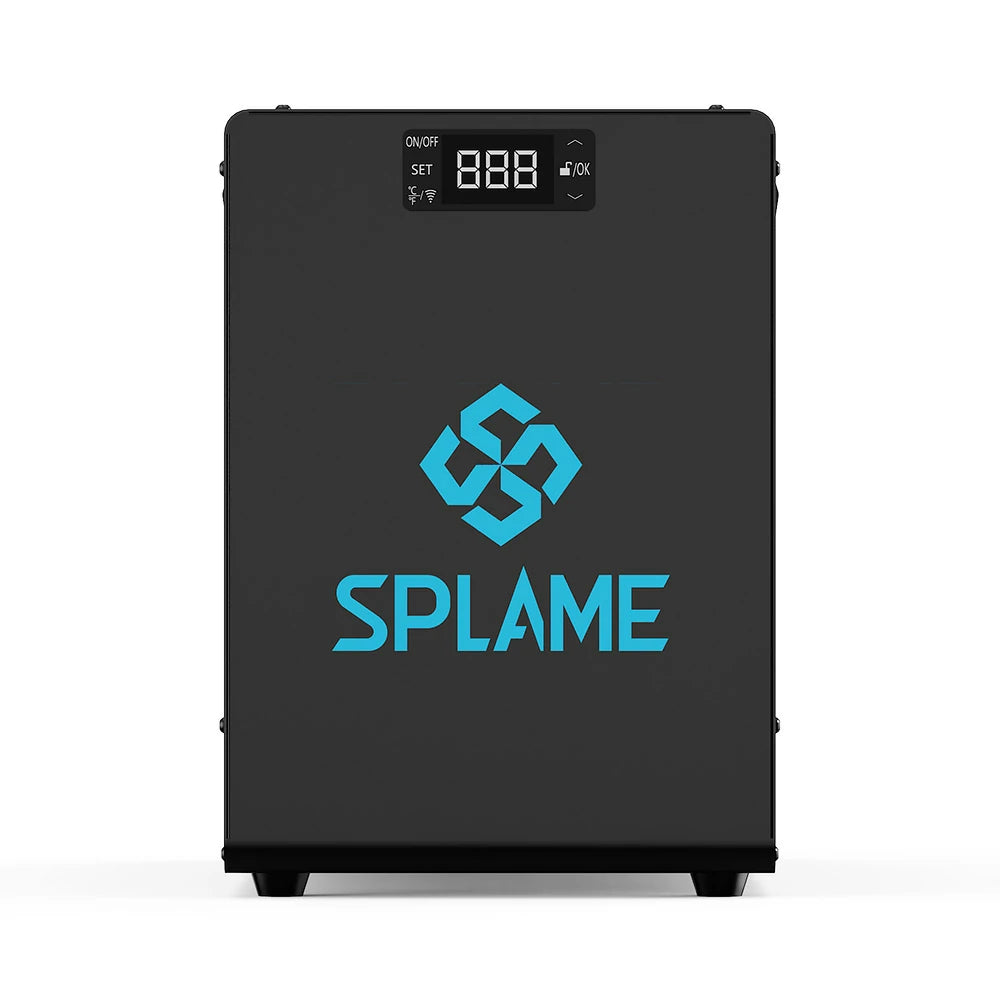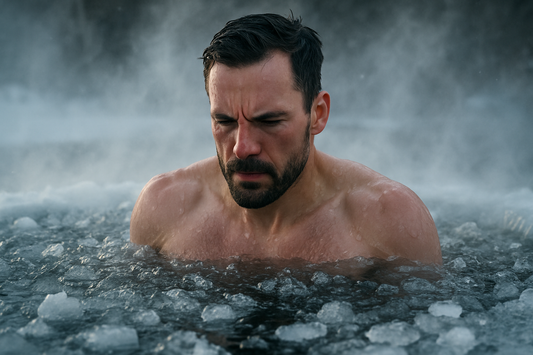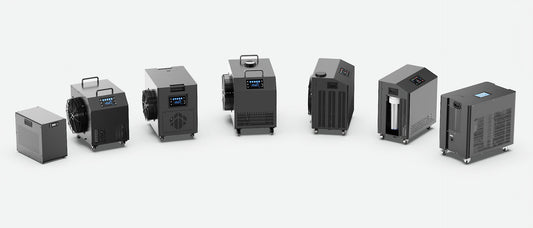
The Complete Guide to Cold Plunge Therapy for Recovery and Performance
Share
We present a rigorous, evidence-aligned reference for cold plunge therapy (cold-water immersion) tailored to athletes, coaches, and wellness professionals. This guide distills physiological mechanisms, optimal protocols, practical safety checks, and usage strategies designed to maximize recovery while minimizing risk.
What Is Cold Plunge Therapy?
Cold plunge therapy — also called cold-water immersion or ice baths — is controlled exposure of the body to low-temperature water (typically 50°F / 10°C or lower) for short durations. Methods range from simple bathtub ice baths to professionally controlled plunge tanks and natural water immersion in lakes or the ocean.
Core Benefits Backed by Research
1. Reduced Muscle Soreness and Inflammation
Rapid vasoconstriction during cold exposure reduces fluid shifts and limits inflammatory signaling at the site of exercise-induced muscle damage (EIMD), which often leads to measurable reductions in delayed onset muscle soreness (DOMS) and improved next-day readiness.
2. Faster Recovery and Short-Term Performance Retention
By attenuating acute tissue inflammation and pain, cold plunges help athletes recover more quickly between close training sessions and competitions, enabling higher training frequency without acute performance loss.
3. Nervous System Regulation and Sleep Quality
Cold exposure stimulates autonomic recalibration (parasympathetic rebound) after high sympathetic load, which can improve sleep onset and quality when integrated appropriately into recovery routines.
4. Acute Cognitive and Mood Benefits
Short-term cold exposure raises circulating catecholamines and dopamine, producing immediate improvements in focus, alertness, and subjective mood among many regular practitioners.
5. Immune and Stress Resilience
Repeated exposure protocols have been associated with modest upregulation of certain immune markers and improved tolerance to physical stressors, which may translate to fewer minor illnesses during intense training phases.
Evidence-Informed Protocols (Goal-Based)
Below are practical protocols we use for different objectives. These are conservative and scalable; begin at the low end and progress based on tolerance and professional guidance.
| Goal | Temperature (°F / °C) | Duration | Frequency |
|---|---|---|---|
| Post-workout recovery | 50–59°F / 10–15°C | 3–8 minutes | 2–4× per week (after intense sessions) |
| Resilience & mood boost | 45–55°F / 7–13°C | 1–5 minutes | Daily or every-other-day |
| Advanced athletic recovery | 39–50°F / 4–10°C | 5–10 minutes | After highest-load sessions (use selectively) |
Timing: When to Use Cold Plunge in Your Training Week
Select timing according to training modality:
- After endurance sessions: Cold plunges generally do not blunt aerobic adaptations and are suitable for post-long-run or post-ride recovery.
- After resistance (strength/hypertrophy) sessions: Use selectively—regular cold immersion immediately after heavy strength sessions may attenuate molecular signaling for muscle hypertrophy. Prefer delaying cold immersion for several hours post-session if maximizing hypertrophy.
- On competition day: Short, mild cold exposure (1–3 minutes) can be used for nervous system priming and to reduce acute soreness.
Mechanisms — How Cold Immersion Works
Key physiological effects we monitor and leverage:
- Vasoconstriction reduces local edema and inflammatory mediator accumulation.
- Decreased metabolic rate in cooled tissue slows reactive oxygen species and secondary damage.
- Neuroendocrine activation (catecholamines, dopamine) improves alertness and subjective vigor.
- Autonomic shift toward parasympathetic activation after the initial sympathetic surge.
Risks, Contraindications & Safety Checklist
Cold plunges are effective but not risk-free. We insist on the checklist below for safe use.
Major risks
- Hypothermia: prolonged exposure can dangerously lower core temperature.
- Cardiovascular stress: sudden immersion can spike heart rate and blood pressure — caution for those with hypertension or heart disease.
- Frostbite: risk for extremities when water/ambient temperature is near or below freezing.
- Training interference: frequent post-strength-session immersion may reduce long-term strength gains.
Pre-plunge safety checklist
- Measure water temperature with a reliable thermometer.
- Never plunge alone in natural water with currents; have supervision or a spotter for outdoor plunges.
- Limit sessions to 10 minutes or less unless supervised medically.
- Keep warm clothing, towels, and shelter immediately available post-immersion.
- Consult a physician if you have cardiovascular disease, uncontrolled hypertension, or serious respiratory conditions.
Practical Implementation — Settings & Equipment
Options and practical considerations:
- DIY bathtub + ice: cost-effective for occasional use; less precise temperature control.
- Dedicated plunge tank: accurate temperature control, filtration, and comfort; recommended for regular users and facilities.
- Natural water: invigorating and inexpensive but variable temperatures, currents, and contamination risks — measure temperature and choose safe locations.
- Cold-plunge centers: good option for one-off sessions or to trial regular use before investing in equipment.
Hygiene and maintenance
Maintain clean water via filtration and periodic sanitization. For commercial or frequent use, use filtration, ozone or UV sanitizers, and routine water testing.
Frequently Asked Practical Questions
How cold is “cold enough”?
We recommend starting at 50°F / 10°C and progress downward as tolerance builds. Many practitioners find clear benefits within the 45–55°F range; advanced users may use temperatures near freezing with careful supervision.
How long should my first session be?
Begin with 30–60 seconds. If comfortable, extend gradually to 2–5 minutes over multiple sessions. Keep the first several sessions conservative.
Can I cold plunge every day?
Yes, for general resilience and mood benefits. For athletes, daily post-training cold plunges may interfere with strength adaptations; use them strategically based on training priorities.
Integration: Build a Weekly Recovery Plan
Example weekly structure we recommend for a mixed athlete (endurance + strength):
- Monday: Strength session → Delay cold plunge 3–6 hours (if used) or skip; prioritize nutrition and sleep.
- Tuesday: Endurance session → Post-session cold plunge 4–6 minutes at 50–55°F.
- Wednesday: Recovery day → Short cold plunge 1–3 minutes for mood and sleep benefits.
- Thursday: Strength session → Same precautions as Monday.
- Friday: Hard endurance or interval session → Post-session plunge 3–8 minutes as needed.
- Weekend: Active recovery + optional cold exposure based on soreness and schedule.
Comparison: Cold Plunge vs. Alternative Recovery Tools
| Method | Primary benefit | Best use case |
|---|---|---|
| Cold plunge | Reduces inflammation, short-term soreness relief | Post-high-load sessions; accelerated next-day readiness |
| Contrast therapy (hot / cold) | Improves circulation and recovery comfort | Rehab and general circulation improvement |
| Compression | Enhances venous return, reduces swelling | Lower-limb recovery, travel |
| Sports massage | Local tension relief | Mobility and targeted soft tissue work |
| Sleep & nutrition | Systemic recovery | Foundational recovery (always required) |
Evidence Summary & Practical Takeaways
We summarize the practical evidence points to guide everyday decisions:
- Cold plunges reliably reduce short-term muscle soreness and speed next-day readiness.
- Frequent, immediate post-strength-session plunges can blunt hypertrophy signaling; avoid when strength/hypertrophy is the primary goal.
- Use cold immersion strategically — not as a blanket solution — and always weigh training goals against short-term recovery needs.
- Safety and medical clearance matter: people with cardiovascular conditions should consult a clinician.
How We Recommend Starting (Step-by-Step)
- Obtain medical clearance if you have cardiovascular or significant health risks.
- Choose a controlled environment (bathtub or plunge tank) for initial sessions.
- Measure water temperature and set a conservative target (50–55°F / 10–13°C) for the first 3–6 sessions.
- Start with 30–60 seconds and increase gradually; monitor breathing and cognitive clarity.
- Record subjective recovery metrics (soreness, sleep quality, perceived readiness) to assess benefit.
Closing Recommendations
Cold plunge therapy is a powerful recovery tool when used intentionally. We advise integrating it into a comprehensive recovery plan — alongside good sleep, targeted nutrition, mobility work, and periodic deloads — to sustain long-term training gains. Use measured protocols, prioritize safety, and tailor application to your sport-specific goals.




